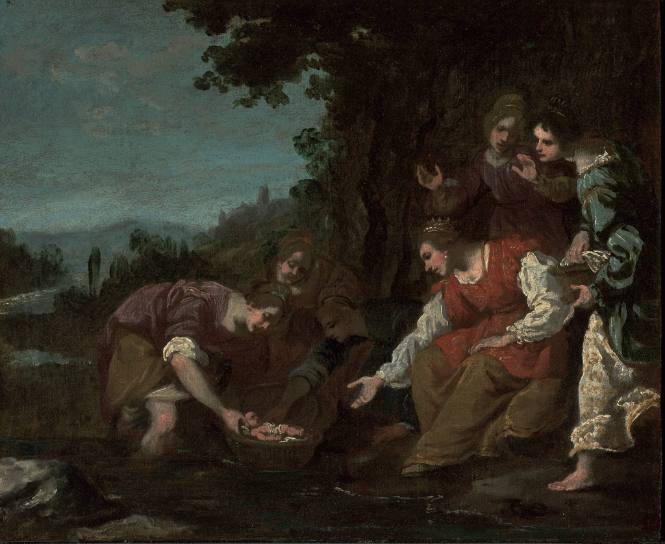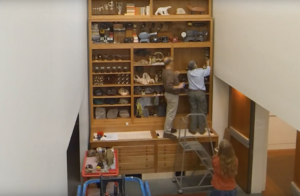Today’s post comes from Margot Vaughan, Vassar Class of 2026 and Art Center Student Guide.
What makes a work of art complete? This is a pretty big question for a short blog post, but I will try my best to carve away at the argument. The definition of a complete work of art has changed drastically over time. Works like Paul Cézanne’s Landscape (above) would have been labeled as sketches or unfinished until the 19th century Impressionist movement. To someone like Jacopo Vignali, working in the 17th century, it would have been outrageous to call Cézanne’s painting a complete work. In fact, some early Impressionist works were deemed so outrageous that they were physically attacked by the public. So is the completeness of a work decided by the art world? By the public? I would say no. Paintings like Cézanne’s did not become complete or finished works because some art critic said so, but rather were always such. Eventually the public and the art world determined Impressionist paintings to be complete works–so were all these works created before the change in public thought incomplete before and then became complete? Can completeness be confirmed retroactively, or must completeness be asserted from the moment the work is made?

To Cézanne, Vignali’s oil sketch for The Finding of the Infant Moses might have been a complete work of art, but I can say with relative certainty that Vignali did not see it that way. So does the artist’s intent matter? I believe intent should be taken into consideration, but is not the end-all be-all when discussing a work’s meaning. When it comes to whether a work is complete or not, however, I’m not so sure.
When I do sketches for art homework, I don’t consider them a completed work, so why should I consider Vignali’s example differently? On the other hand, if you took Vignali’s oil sketch and removed the word “sketch” from the painting’s description, I would accept it as a complete work, especially if it were hung next to Cézanne’s. Then is it the label that changes the work’s status? No. As Shakespeare put it, “A rose by any other name would smell as sweet.” A sketch called a painting is still a sketch, at least in some regard.
At this point, I have a billion more questions and almost no answers. I understand that completeness is not determined by the art world, the public, the artist alone, or labels. There is another force at play, though: you, or rather everyone. You may be thinking that “the public” and “everyone” are one and the same, but I would disagree. By “the public”, I mean a conglomerate, a sort of hive-mind decision maker that represents the average feelings of society. By everyone, I mean all individuals. Each of us has our own power to consider if a work is complete or not, as in the example of The Finding of the Infant Moses. Vignali understood it to be a sketch, so I follow suit. While I still see its value as an individual work, I understand the sketch to be part of a larger process. As in this example, I assert that the completeness of a work is decided through a conversation between artist and viewer; it is the implied intent of the artist as interpreted by the viewer that makes a work finished or not.




